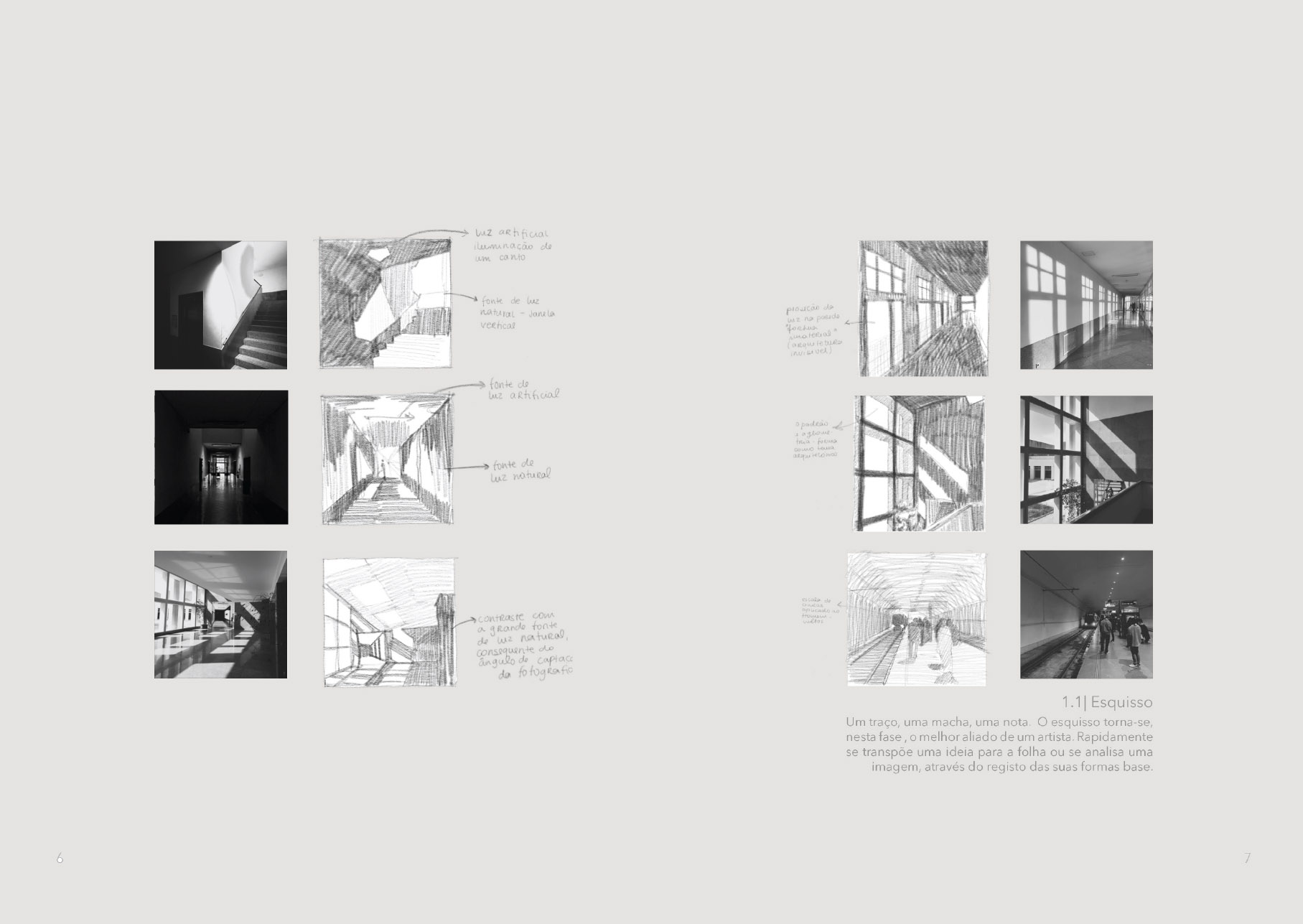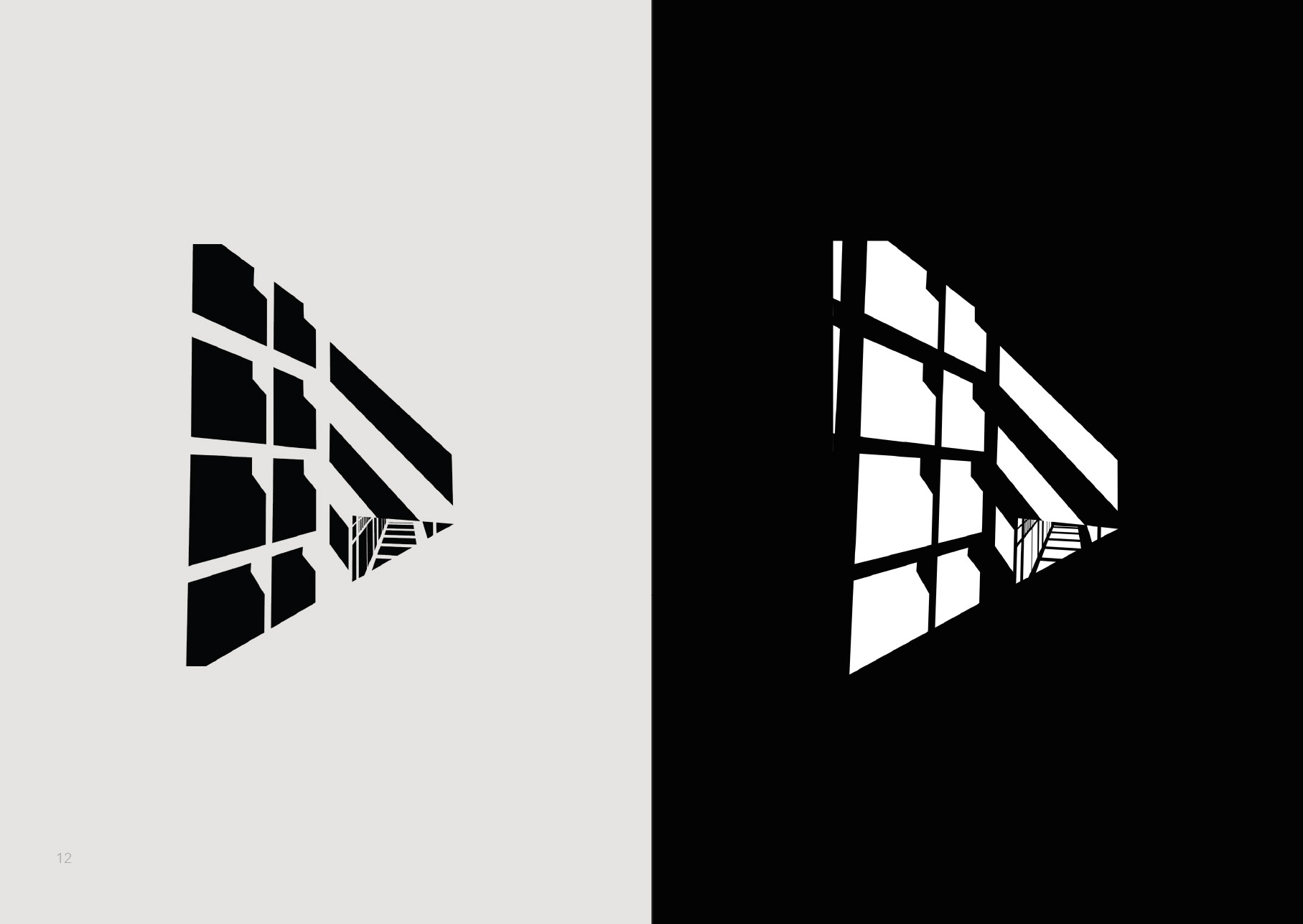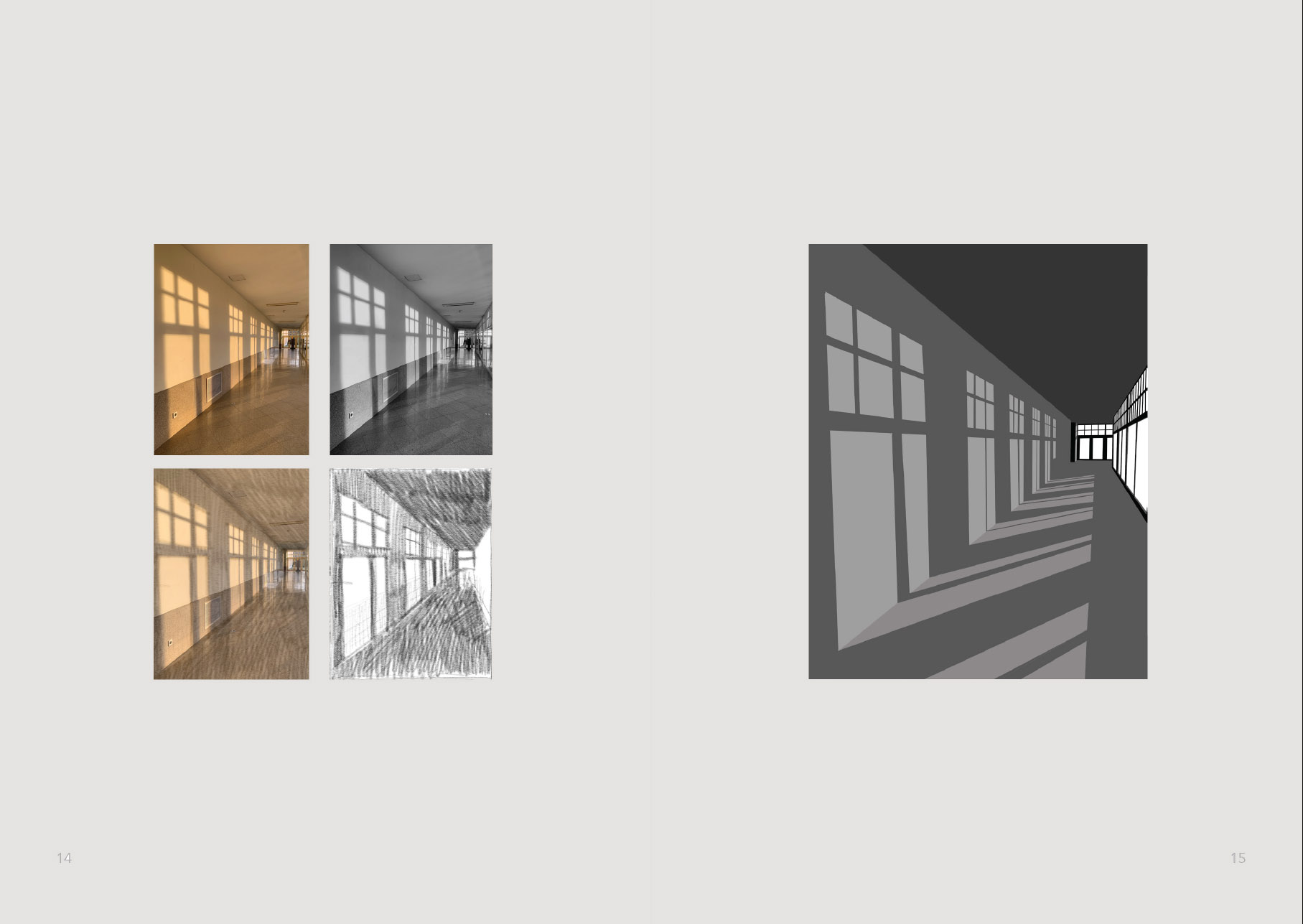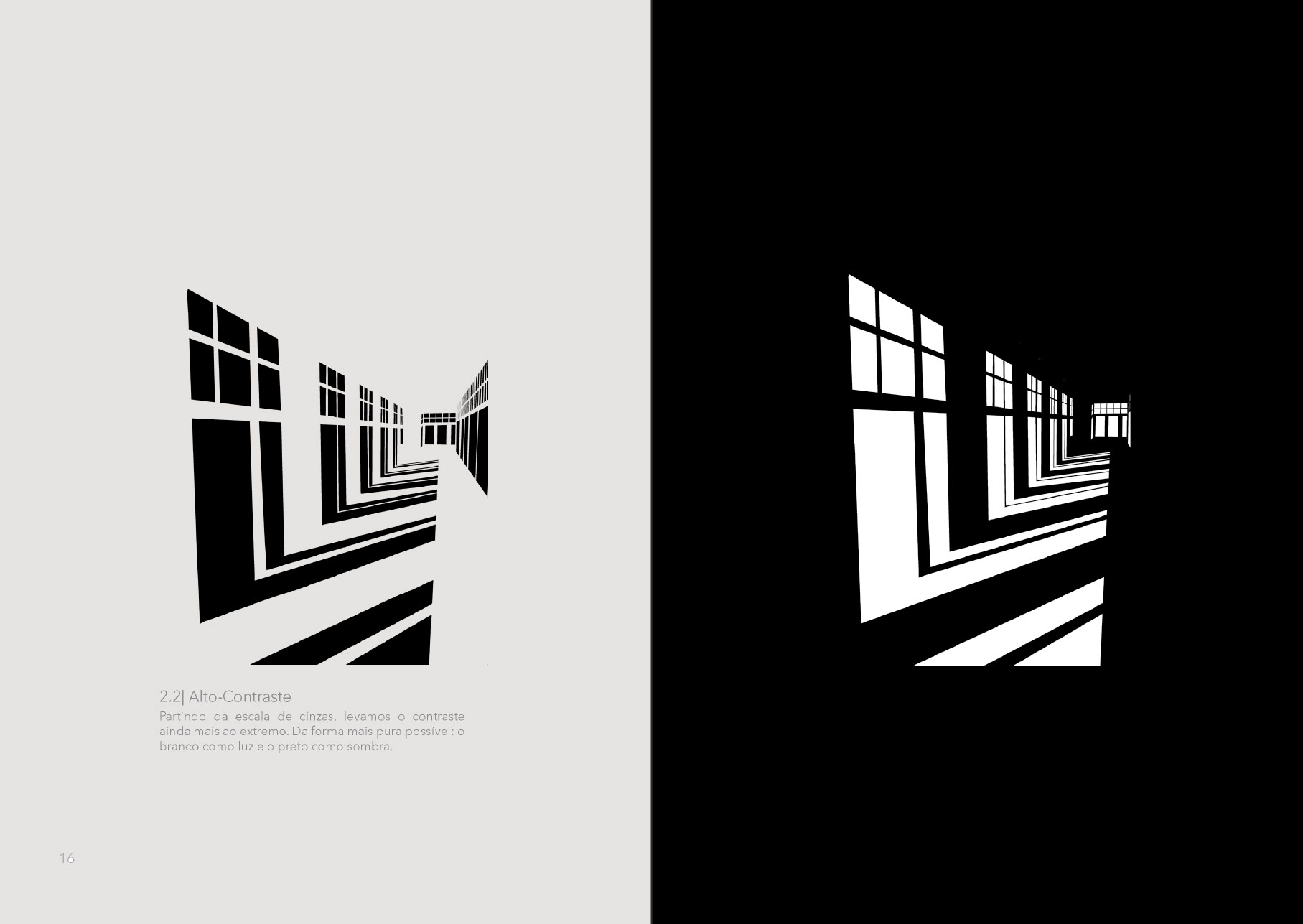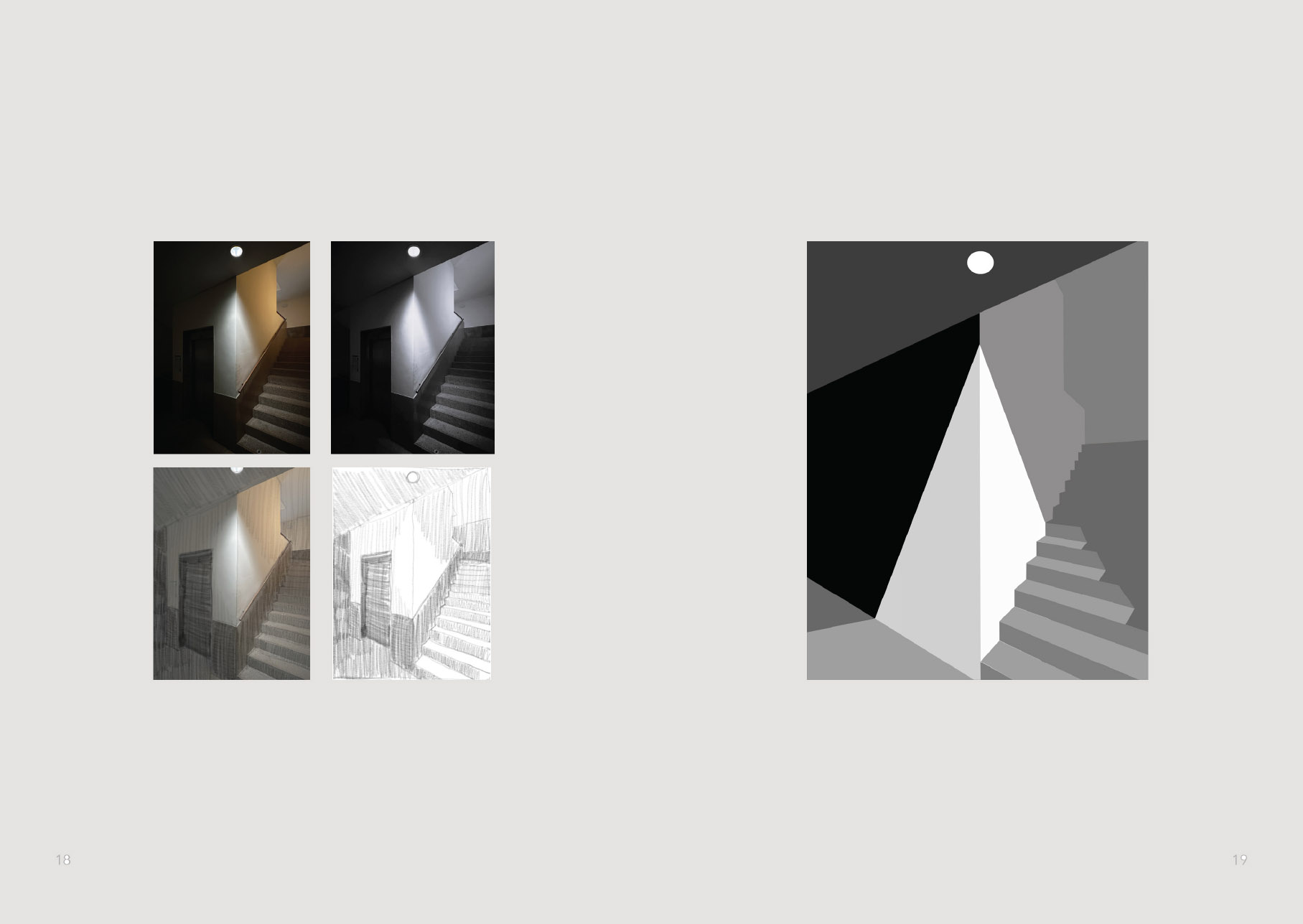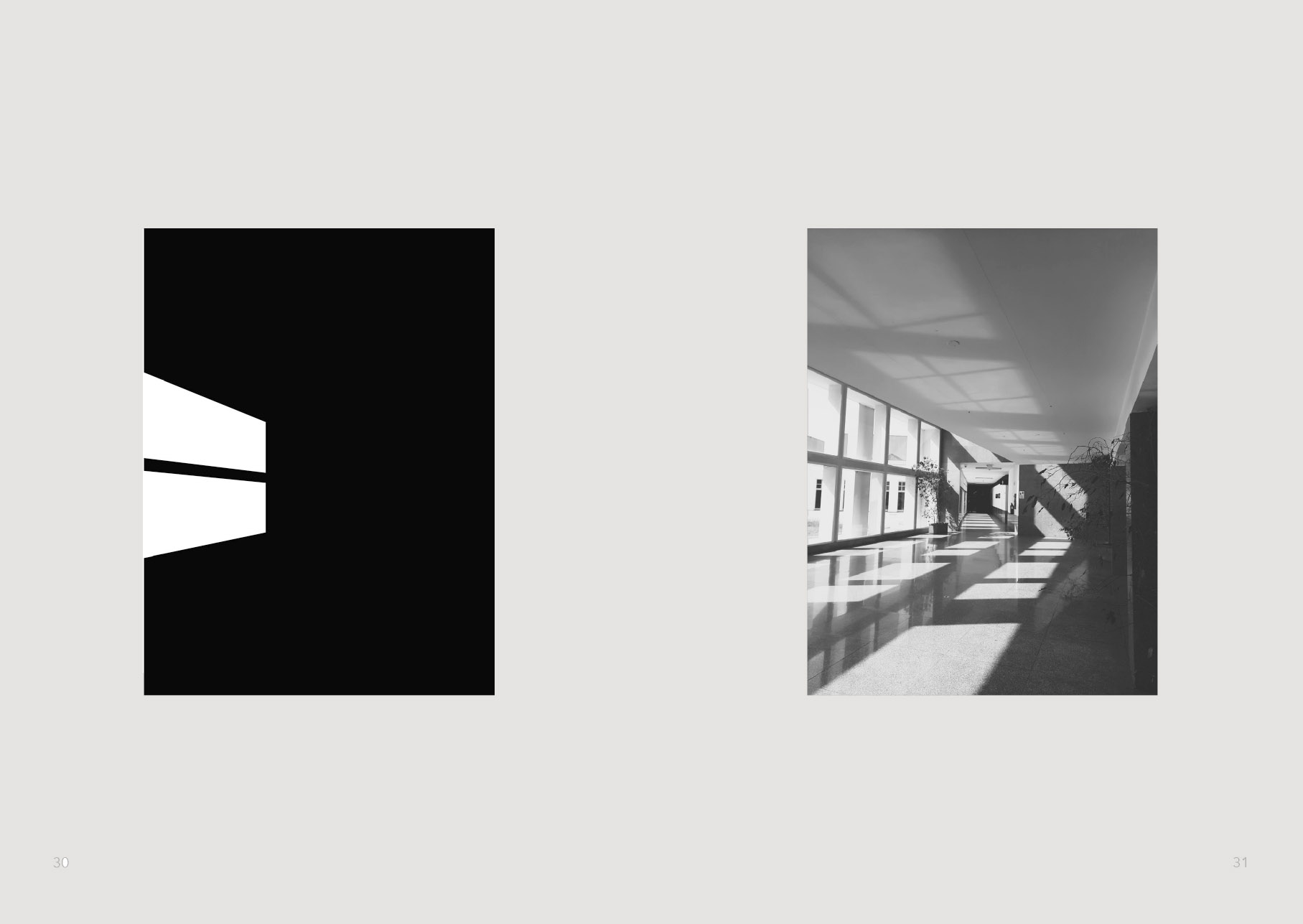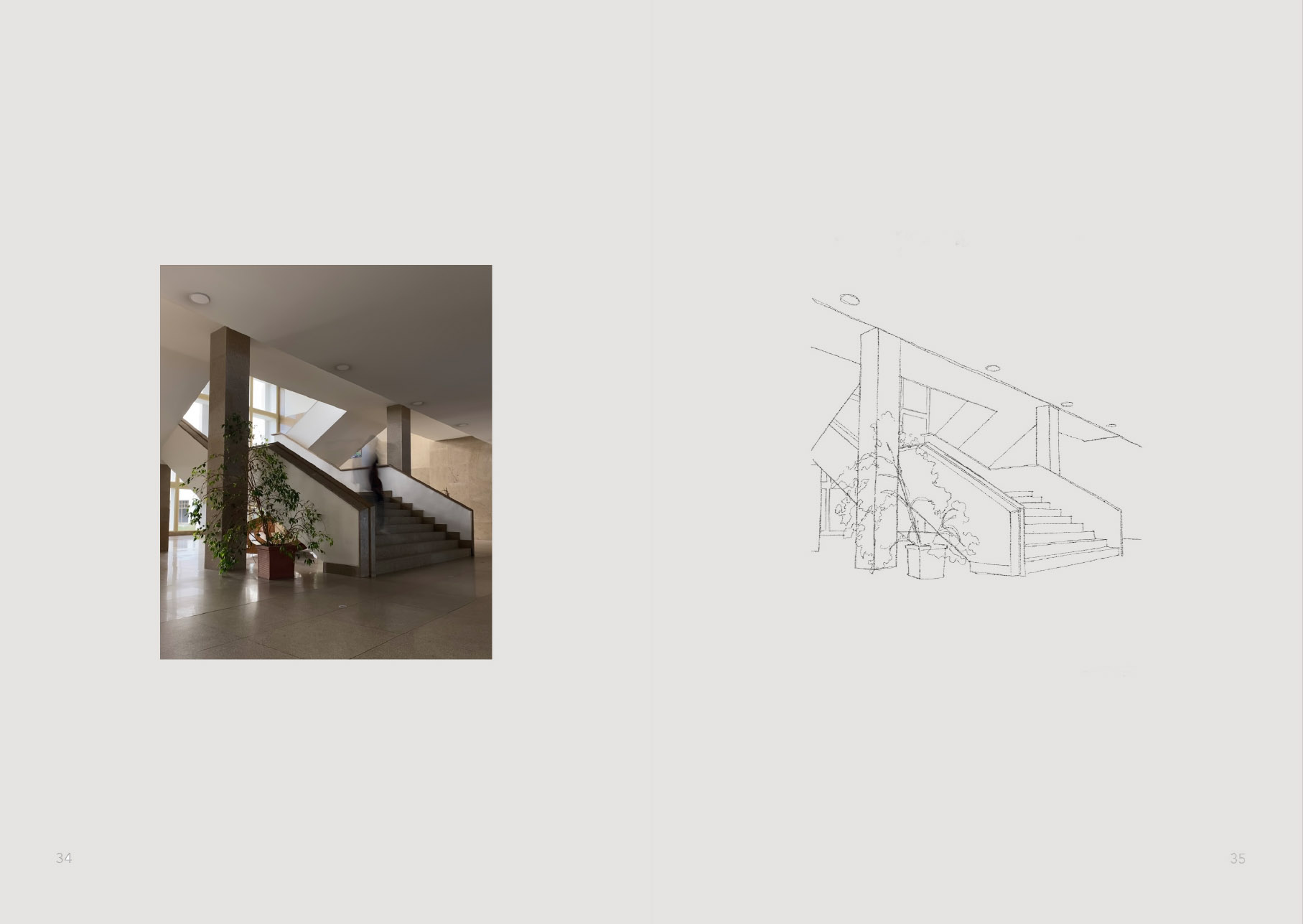The project focusing on the construction of an Atlas of Images following a route involving these two architectural programmes was based on the following concepts:
00| The Idea
All creation implies a thoughtful, utopian and immaterial process phase. In architecture, this phase corresponds to the project, thinking, developing and designing. The idea would therefore be nothing more than the starting point and a guiding line for a final product. The development and evolution of this idea in itself embraces the study, as a phase of exploration. The creator is now free to approach the idea from different perspectives and themes, using different media. In this work, the study phase takes on the role of the main problem, with light and shadow as its theme and the different approaches and media that can be applied to it.
Ler mais
01| The Process
The embryonic phase of studying and the development of an idea. Thinking is quick and not very in-depth. The greatest tool is the ability to see and interpret. Mental logics and imagined schemes that generate intrigue, doubts and questions. A drawing takes on the value of a sentence and a sentence becomes the translation of a thought. Imperfect, but effective.
02| The Experience
The perception of space, what is observed and what is experienced can be transmitted – or at least attempted – through an image. It’s possible to interpret that image, understand what it conveys, ramble on about the phenomena observed. Light, shadow, reflections, transparencies. It is possible to resort to the idea of synthesis, simplifying and interpreting these same characteristics and deconstructing reality.
03| The Overlap
Now it’s time for an exercise of deconstruction. Deconstructing what we see and fragmenting the landscape. Plane upon plane, organised by the distance or proximity of the object to the observer.
The image is simplified, and these planes are constructed, but now without distance or interval. Light becomes pigment, and space is reduced to a superimposition.
04| The Cycle
Architecture is a subject in constant mutation, directly influenced by its surroundings and nature. Throughout history, man has created new strategies and developed capacities to combat and coexist with a series of natural phenomena.
The greatest difficulty lies in the cyclical nature of this force – the days, the seasons, the disasters. We are therefore obliged to develop solutions that take advantage of and simultaneously neutralise these cycles.
05| The Object
The materialisation of an idea occurs the moment it leaves our thoughts and travels onto paper. It takes on a physical form, a volume, it becomes tangible. It comes close to fulfilling an idea, it becomes material, and – perhaps most importantly – sensorial.
06| The Order
The decomposition and fragmentation of an idea or image gives rise to lose, individual elements. The organisation of these elements, once individualised, is free and up to the interest and interpretation of the person working on it. There is often no single solution or correct order. Changing the order only leads to different solutions.



